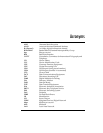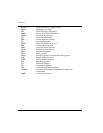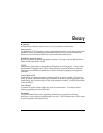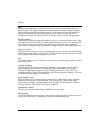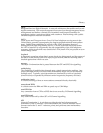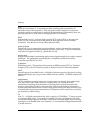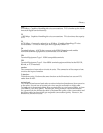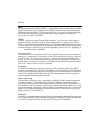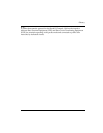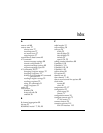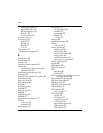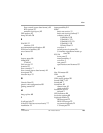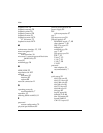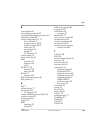
Glossary
128 ISU 128 User Manual 61202.029L2-1
2B+D
The Basic Rate Interface (BRI) in ISDN. A single ISDN circuit divided into two 64 kbps
digital channels for voice or data and one 16 kbps channel for low speed data (up to
9,600 baud) and signalling. 2B+D is carried on one or two pairs of wires depending
on the interface, the same wire pairs that today bring a single voice circuit int
o your home or office. See ISDN.
23B+D
In ISDN, also known as the Primary Rate Interface. A circuit with a wide range of
frequencies that is divided in twenty-three 64 kbps paths for carrying voice, data,
video, or other information simultaneously. It bears a remarkable similarity to today's
T1 link, except that T1 carries 24 voice channels. In ISDN, 23B+D gives twenty-three
channels and one D channel for out of band signalling. However, in T1, signalling is
handled in band. See ISDN.
two-wire circuit
A transmission circuit composed of two wires, signal and ground, used to both send
and receive information. In contrast, a 4-wire circuit consists of two pairs. One pair
is used to send. One pair is used to receive. All trunk circuits (long distance) are
4-wire. A 4-wire circuit delivers better reception, but also costs more. All local loop
circuits (those coming from a Class 5 central office to the subscriber's phone system)
are 2-wire, unless a 4-wire circuit is requested.
U-interface
A twisted pair subscriber loop that connects the NT1 reference point to the ISDN
network, as defined in the I.411 Recommendation. This interface provides Basic Rate
Access with an operating frequency of 160 kbps and an information rate of 144 kbps.
Under U.S. regulations, this also marks the line of demarcation between customer-
owned equipment and the public network.
video-conferencing
The real-time, usually two-way, transmission of digitized video images between tw
o or more locations. Teleconferencing requires a wideband transmission facility.
Transmitted images may be freeze-frame (where television screen is repainted every
few seconds to every 20 seconds) or full motion. Bandwidth requirements for two-way
video conferencing range from 6 MHz for analog, full-motion, full-color, commercial
grade TV to 56 kbps for digitally-encoded freeze-frame to 1.544 kbps for very good
quality, full-color, full-motion TV.
wideband
Generally, a communications channel offering a transmission bandwidth greater than
a voice grade channel. Data transmission speeds on wideband facilities are typically
in excess of 9.6 kbps and often at rates such as 56 kbps and 1.544 Mbps.




